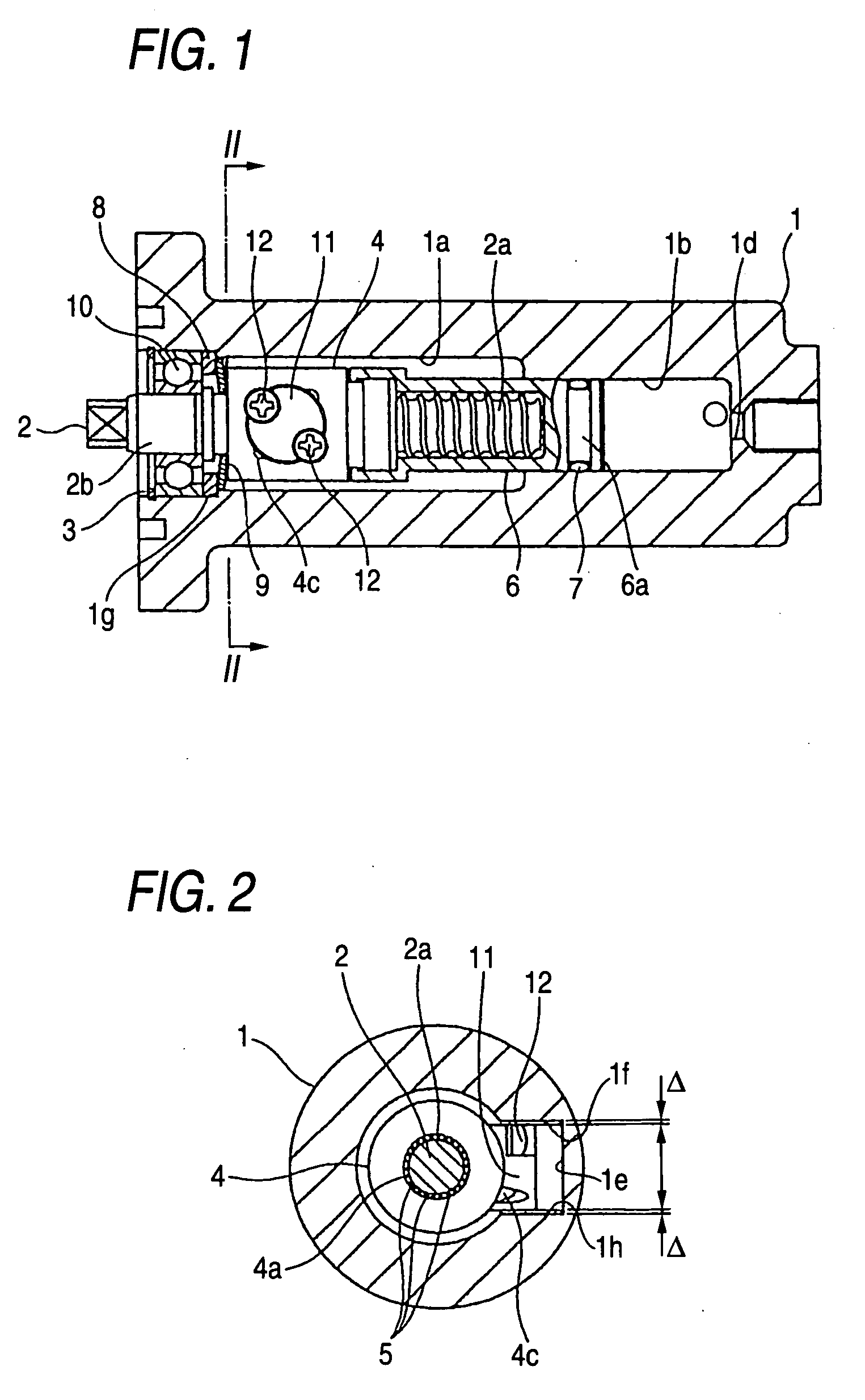Ball screw mechanism
a technology of ball screw and screw body, which is applied in the direction of gearing, gearing elements, hoisting equipment, etc., can solve the problems of increased manufacturing cost, difficulty in machined nut, and deterioration of assemblability, so as to prevent operation failure and noise, increase manufacturing cost, and facilitate assembly
- Summary
- Abstract
- Description
- Claims
- Application Information
AI Technical Summary
Benefits of technology
Problems solved by technology
Method used
Image
Examples
first embodiment
[0066] Hereinafter, a preferred embodiment of the invention will be described with reference to accompanying drawings. FIG. 1 is a cross-sectional view showing a cylinder device in which a ball screw mechanism of a first embodiment is assembled. FIG. 2 is a cross-sectional view taken along line II-II of FIG. 1 as seen in a direction indicated by arrows. FIG. 3A is a bottom view of a mounting member, FIG. 3B is a side view thereof, and FIG. 3C is a top view thereof. FIG. 4 is a perspective view showing a state in which a tube and a mounting member are exploded from the nut.
[0067] In the cylinder device shown in FIG. 1, a cylindrical case 1 (also called as a housing) has a cavity 1a for receiving a ball screw mechanism in the inside thereof, a cylinder portion 1b having a constant diameter, a fluid inlet 1c (FIGS. 5 and 6) communicating with the cylinder portion 1b, and a fluid outlet 1d. In addition, the fluid inlet 1c may be provided with a check valve for allowing only an inflow o...
second embodiment
[0081] Hereinafter, a preferred embodiment of the invention will be described with reference to accompanying drawings. FIG. 7 is a cross-sectional view showing a cylinder device in which a ball screw mechanism of a second embodiment is assembled. FIG. 8 is a cross-sectional view taken along line II-II of FIG. 7 as seen in a direction indicated by arrows. FIG. 9 is cross-sectional view taken along line III-III of FIG. 7 as seen in a direction indicated by arrows. FIG. 10 is a top view showing a mounting member in a mounting state.
[0082] In the cylinder device shown in FIG. 7, a cylindrical case 101 (also called as a housing) has a cavity 101a for receiving a ball screw mechanism in the inside thereof, a cylinder portion 101b having a constant diameter, a fluid inlet 101c (FIGS. 11 and 12) communicating with the cylinder portion 101b, and a fluid outlet 101d. In addition, the fluid inlet 101c may be provided with a check valve for allowing only an inflow of the fluid, and the fluid o...
third embodiment
[0097] Hereinafter, a preferred embodiment of the invention will be described with reference to accompanying drawings. FIG. 13 is a cross-sectional view showing a cylinder device in which a ball screw mechanism of a third embodiment is assembled. FIG. 14 is a cross-sectional view taken along line II-II of FIG. 13 as seen in a direction indicated by arrows. FIG. 15 is a view illustrating the operation of the cylinder device. The cylinder device can be used to push brake fluid at the time of braking of a vehicle.
[0098] In the cylinder device shown in FIG. 13, a cylindrical case 201 (also called as a housing) has a cavity 201a for receiving a ball screw mechanism in the inside thereof, a cylinder portion 201b having a constant diameter, a fluid inlet 201c (FIG. 15) communicating with the cylinder portion 201b, and a fluid outlet 201d. In addition, the fluid inlet 201c may be provided with a check valve for allowing only an inflow of the fluid, and the fluid outlet 201d may be provided...
PUM
 Login to View More
Login to View More Abstract
Description
Claims
Application Information
 Login to View More
Login to View More - R&D
- Intellectual Property
- Life Sciences
- Materials
- Tech Scout
- Unparalleled Data Quality
- Higher Quality Content
- 60% Fewer Hallucinations
Browse by: Latest US Patents, China's latest patents, Technical Efficacy Thesaurus, Application Domain, Technology Topic, Popular Technical Reports.
© 2025 PatSnap. All rights reserved.Legal|Privacy policy|Modern Slavery Act Transparency Statement|Sitemap|About US| Contact US: help@patsnap.com



